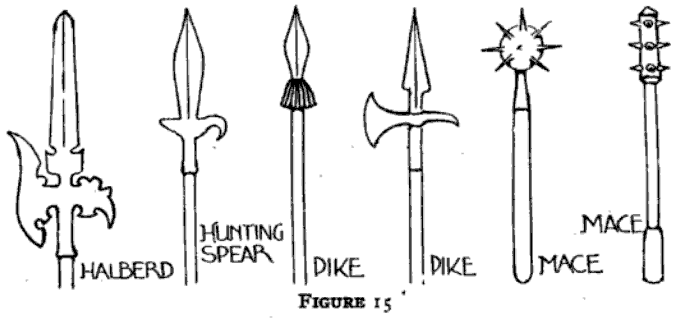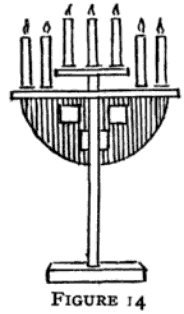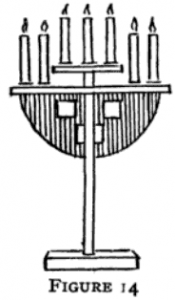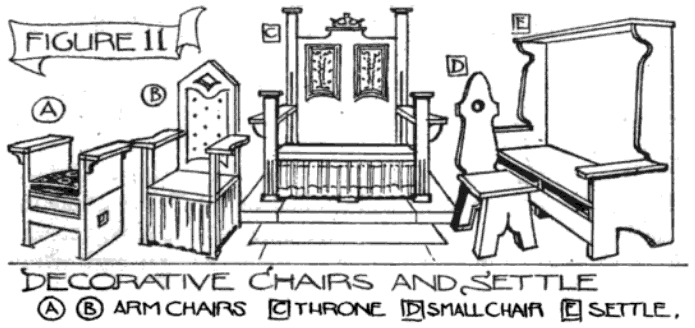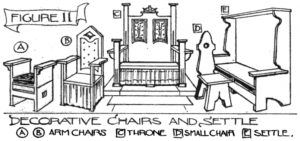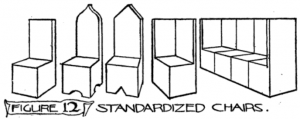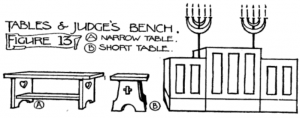This is the third excerpt from a chapter concerning prop-making in “Shakespeare for Community Playersâ€, by Roy Mitchell. Be sure to check out the previous part on tableware, as well as the first part, concerning furniture.
Weapons
Weapons form another delightful field for the maker of accessories. Where a sword fight is required it is best to use the modern buttoned foils, and contrive some means whereby they need not be drawn from their scabbards on stage. The use of anything more real than a foil is not advisable. If it is imperative that swords be drawn on stage, a scabbard for a foil may be made from tin piping, built out and covered with leather. Swords used for personal adornment need only be a scabbard with a handle. These may best be made of wood, following some fine model, and the hilt and decorations made in metal. The armourer of the company will do well, however, to consult a book or an encyclopaedia article upon these and all weapons before setting to work.
Spears or lances may be made out of wood. It is a mistake to put on hollow tin points. It is better to shape a point out of wood and silver it. Tin tops are continually working loose and clattering down on somebody’s head. Make lances at least ten feet long, especially where several are carried together. Nothing looks meaner than a feeble lance or spear, and nothing finer than a tall one. Halberds need not be so long, especially if they carry ornate heads. Figure 15 shows typical spear, pikes, maces and halberd.
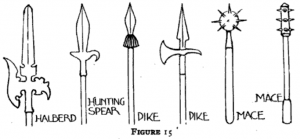
Bows should be tall and decorative, and are carried unstrung. Figure 16 shows a typical long-bow, crossbow, and arquebus. These may all be of soft pine or cedar cut with a jack-knife.
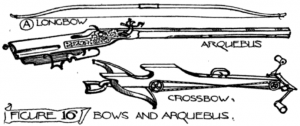
Reprinted from Shakespeare for Community Players, by Roy Mitchell, J.M. Dent & Sons ltd., 1919 (pp 63-64)

